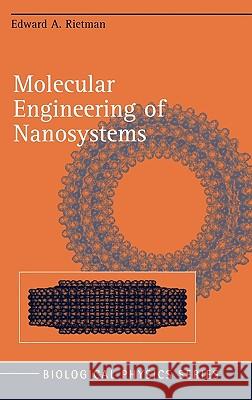Molecular Engineering of Nanosystems » książka
Molecular Engineering of Nanosystems
ISBN-13: 9780387989884 / Angielski / Twarda / 2001 / 259 str.
Recent advances in scanning-probe technology, in optical technology (optical "tweezers"), and in solution-phase chemistry now enable us to manipulate individual atoms and molecules. It is thus becoming possible not only to build machines at the scale of integrated electronic circuits and circuits with "wires" no thicker than an atom, but also to manipulate biological tissues and materials at the scale of individual cells, organelles, and even molecules. The implications of this technology are profound: for computer technology, for electromechanical sensors and actuators, for materials science and manufacturing, and for biomedical engineering.--The molecular machines of living organisms provide the paradigm for the discussion in this text. It thus emphasizes chemical physics, particularly solution-phase chemistry, as a basis for understanding the assembly of molecular machines. In addition, the book discusses the proximity-probe methods and bioengineering associated with understanding and designing devices at nanometer scales.--"Molecular Nantechnology " will be of interest to physicists, chemists, materials scientists, biological physicists, computer scientists, and manufacturing engineers.--From the reviews: -- Provides] an intuitive, scientific framework for understanding nanoscale systems . . . Rietman had organized the book around his precept that solution-phase chemistry and protein engineering will bootstrap us into the first phase of nanotechnology. . . . Useful for those who might need a basic introduction to some of the important issues in nanotechnology and the influence of the chemical and biological science on the nanotechnology revolution . . . Those seeking a qualitative picture of nanoscale systems engineering will find it a useful reference.--Physics Today











